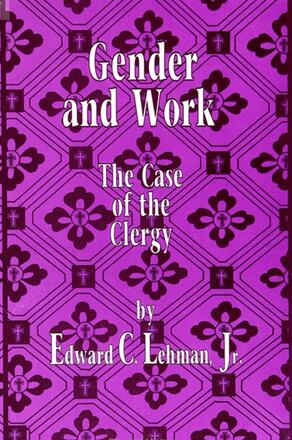
Gender and Work
The Case of the Clergy
Alternative formats available from:
Description
In this book, Lehman compares the ministry styles of women and men focussing on clergy of Protestant Congregations (ministers, clerics, preachers, and parsons). He offers strong statistical support for the trend toward increasing numbers of women in clerical roles. His book is the first to make direct comparisons between men and women on several dimensions of ministry style (using a national sample): interpersonal style, theology, career goals, thought forms, power and authority, and ethics.
Edward C. Lehman, Jr. is Professor of Sociology at the State University of New York, College at Brockport. He is the author of Women Clergy: Breaking Through Gender Barriers.
Reviews
"This is a very careful and scholarly study of the differences in leadership styles of women clergy and men clergy." — Ruth Wallace, George Washington University
"This book is a refreshing change in gender research. Theory and data gathering around gendered concerns have often only examined women. This text samples both women and men; therefore, it not only compares them but says something significant about both. What is significant here is that women and men are more alike than different. This conclusion challenges all feminist theorists (not just cultural feminists) to rethink theory and to ground theory in empirical work." — Victoria Erickson, Union Theological Seminary in New York City
"The manner is which Lehman presents the theories about women's 'special nature' and ways of interacting with others and how these may relate to differences between clergywomen and clergymen is well done. The care which Lehman takes to describe the relationship between theory and the survey indicators of attitudes and actions he uses is equally good." — Adair T. Lummis, Hartford Seminary